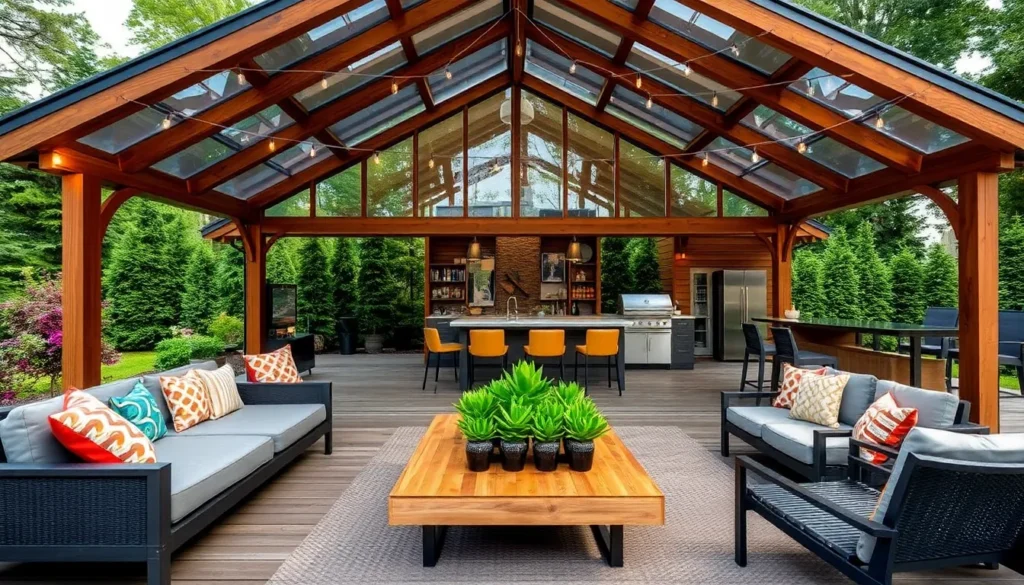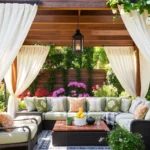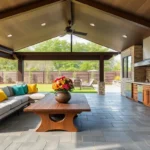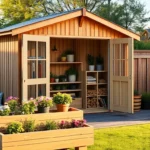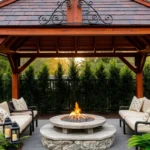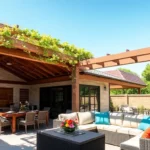Transforming your outdoor space into a year-round sanctuary is not just a possibility—it’s an exciting adventure waiting to unfold. Whether you’re new to the world of patio design or a seasoned homeowner looking to refresh your space, selecting the right outdoor shelter can make all the difference. These versatile structures do more than just shield you from the elements; they invite you to enjoy the beauty of each season in comfort and style.
In this article, we’ll explore 14 diverse outdoor shelters that cater to a variety of tastes and needs, from sleek modern pergolas to cozy rustic gazebos. You’ll discover practical tips for choosing the perfect shelter that complements your home and enhances your outdoor experience. So, let’s dive into creating a welcoming retreat that beckons you outside every day of the year, no matter the weather.
Choosing the Right Shelter Material
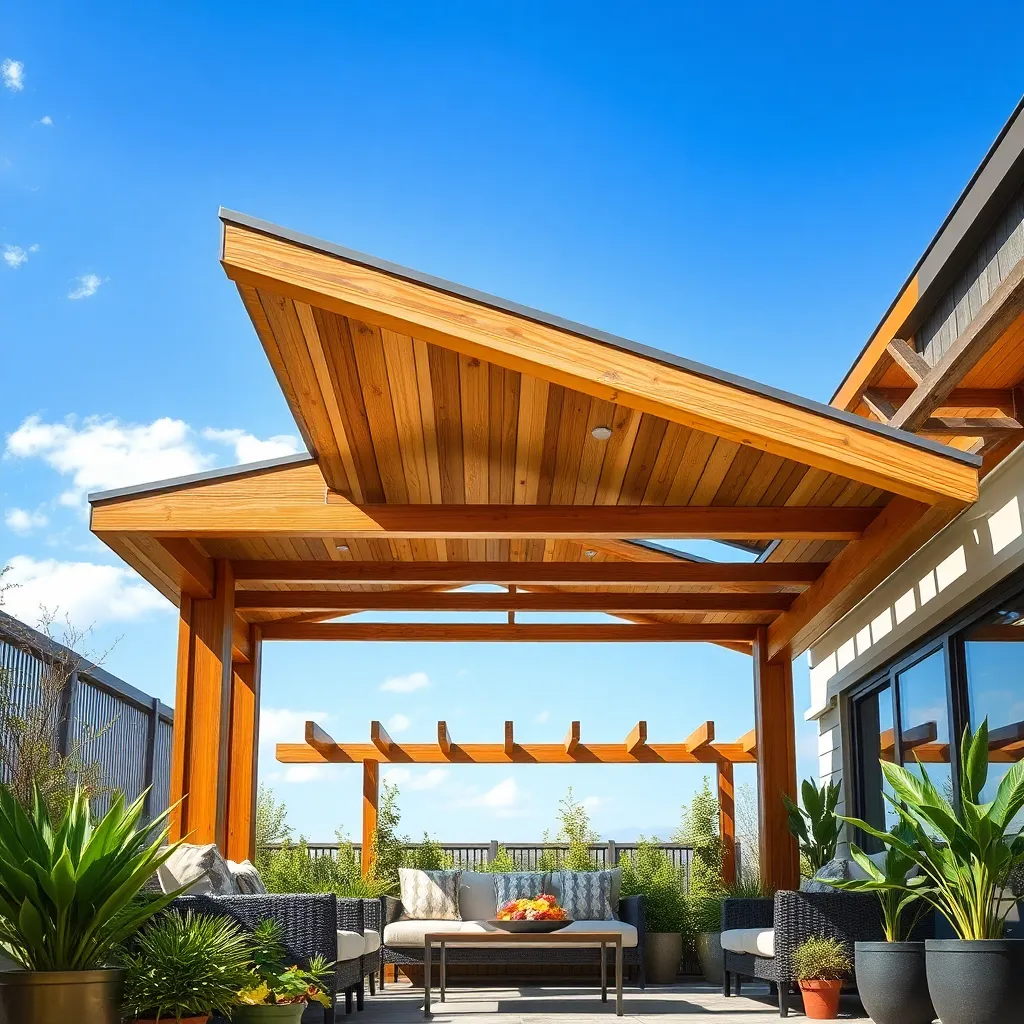
When selecting the right material for your outdoor shelter, consider both climate resilience and aesthetic appeal. Wood, such as cedar or redwood, offers a natural look and excellent durability, especially when treated for weather resistance. Meanwhile, metal options like aluminum or steel provide strength and a sleek modern appearance, ideal for areas prone to high winds or heavy snow. For a lightweight and versatile choice, polycarbonate panels offer UV protection and are easy to install, making them perfect for DIY enthusiasts.
Advanced gardeners may want to explore combining materials to enhance both function and design. For instance, using a wooden frame with a polycarbonate roof offers a balance of natural warmth and all-season protection, allowing light to filter through while keeping the area dry. Ensure that your selected materials complement the existing landscape and home exterior for a cohesive look. Remember to consider the maintenance requirements of each material to ensure your shelter remains a beautiful and functional part of your garden for years to come.
Pop-Up Tents: Quick and Convenient
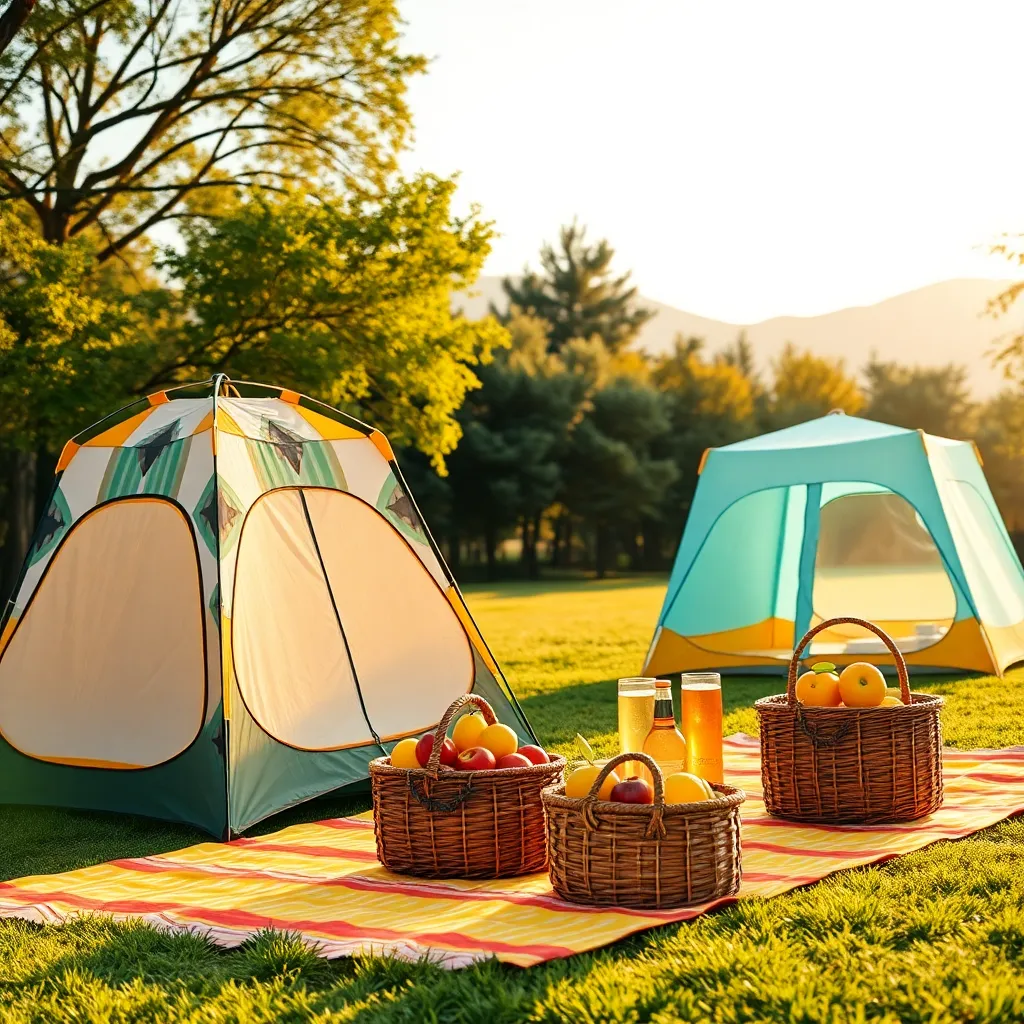
Pop-up tents are an ideal solution for those who need a quick and convenient outdoor shelter. These portable structures are designed for easy assembly and disassembly, making them perfect for spontaneous gatherings or events. When selecting a pop-up tent, consider options with durable materials like polyester or nylon, which provide excellent weather resistance. Additionally, look for tents with UV protection and water-resistant coatings to ensure longevity and performance in various weather conditions.
For homeowners seeking versatility, choose a pop-up tent with adjustable height settings and sidewalls. This feature allows you to customize the tent according to the event’s needs, whether you’re hosting a backyard BBQ or providing shade for a garden party. Advanced models come with reinforced frames and high-quality zippers, offering enhanced durability and security. Remember to anchor your tent with sturdy stakes or weights to ensure stability against wind. With these tips, even novice gardeners can quickly set up a reliable outdoor shelter.
Gazebos: Elegant All-Year Coverage
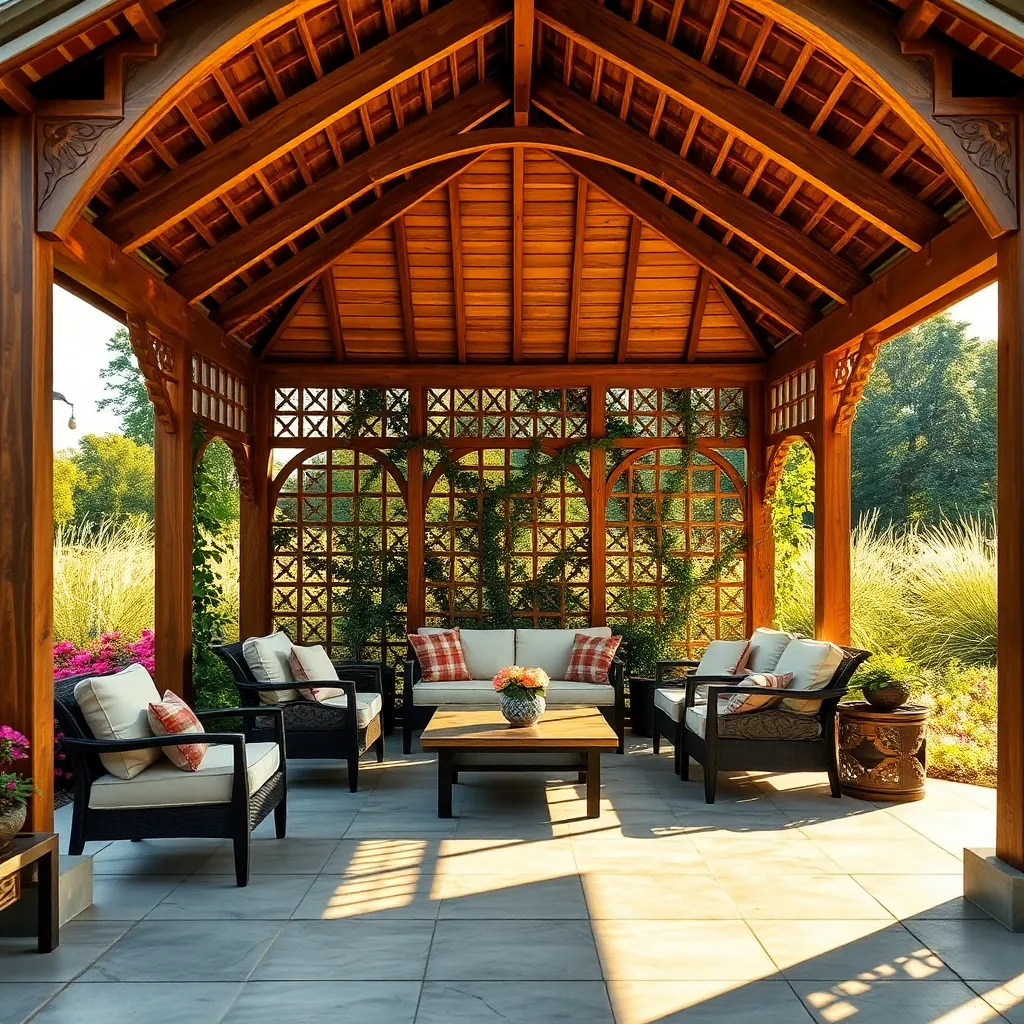
Gazebos offer an elegant solution for those seeking all-year coverage in their outdoor spaces. These structures can be crafted from materials like wood, metal, or vinyl, each with its own benefits. Wooden gazebos provide a classic, natural aesthetic, though they require regular maintenance to withstand the elements. Metal options, such as aluminum or steel, boast durability and a modern look, while vinyl offers low-maintenance charm. When selecting a gazebo, consider the size of your yard and the purpose of the space; a standard 10×10 foot gazebo is perfect for small gatherings, while larger dimensions can accommodate more extensive entertaining.
Emphasizing design elements like a cupola or decorative trim can enhance your gazebo’s visual appeal, making it a standout feature in any garden. For those looking to extend usability throughout the year, consider adding removable side panels or curtains to protect against wind and rain. Additionally, installing a vented roof can help with air circulation during the warmer months. If you have experience with DIY projects, building a gazebo from a kit could be a rewarding challenge, providing a personalized touch to your outdoor haven. For beginners, hiring a professional may ensure a sturdy, well-constructed result that enhances your garden’s beauty and functionality.
Canopy Tents for Versatile Use
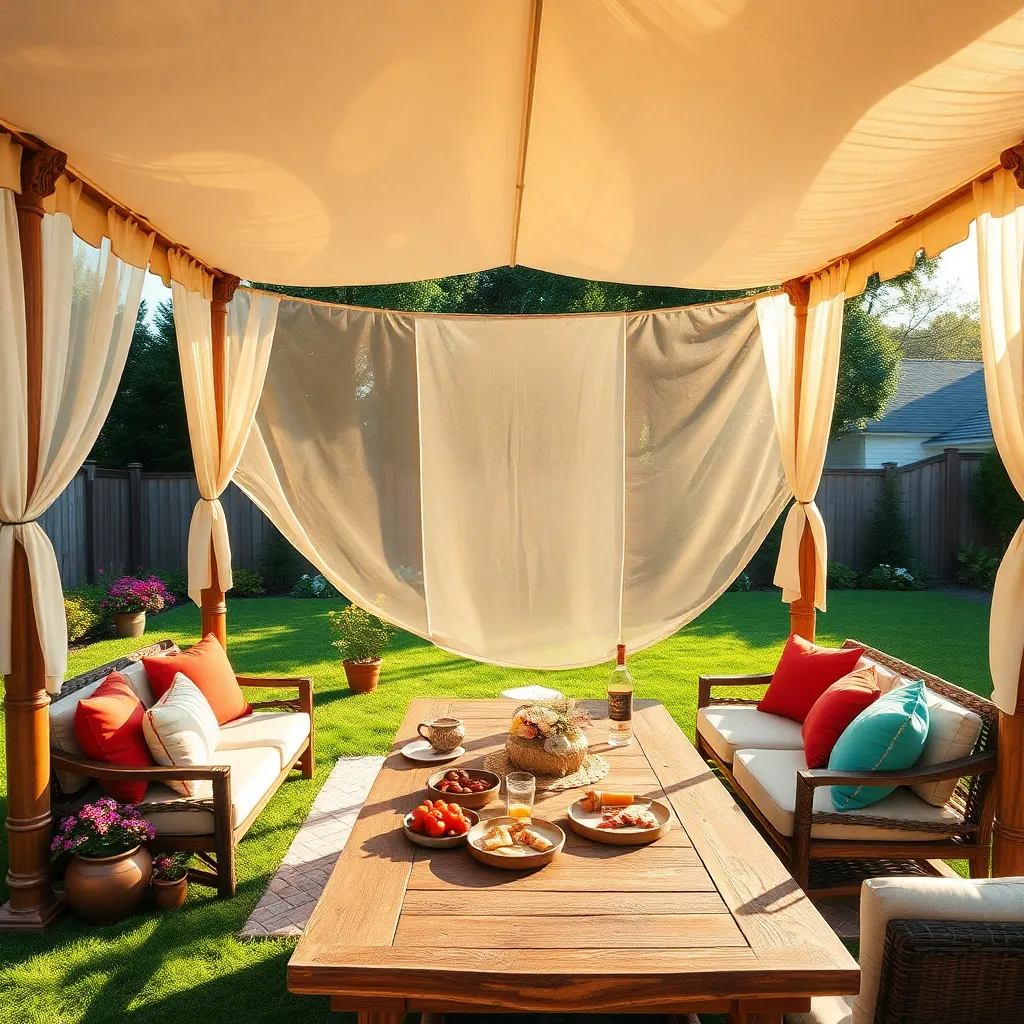
Canopy tents are a versatile choice for any outdoor space, offering flexibility and ease of use. These tents can be quickly set up and dismantled, making them perfect for temporary shelter during events or as a semi-permanent solution in your garden. Opt for materials such as UV-resistant polyester or waterproof canvas to ensure durability in various weather conditions. For a beginner-friendly setup, choose a pop-up design with adjustable legs, allowing for quick height adjustments and easy portability.
To enhance functionality, consider adding sidewalls or mosquito netting for additional protection against the elements and insects. Advanced users might explore custom designs with reinforced frames or integrated lighting for extended usage. When selecting a canopy tent, pay attention to the size and shape—rectangular models offer more space, while hexagonal ones provide a unique aesthetic touch. Always secure your canopy with weights or stakes, especially in windy areas, to ensure stability and safety.
Yurts: Traditional Yet Modern Shelters

Yurts offer a unique blend of tradition and modernity, making them an excellent choice for a year-round outdoor shelter. These circular tents, originally used by nomadic cultures, are now constructed using modern materials such as durable canvas or weather-resistant polyester, supported by lightweight yet sturdy wooden frames. To create a cozy interior, consider adding insulated liners that help maintain a comfortable temperature, no matter the season. For beginners, starting with a basic yurt kit that includes all necessary components can simplify the building process, while more experienced builders might enjoy customizing their structure with additional features like skylights or solar-powered ventilation systems.
When setting up a yurt, location is key. Choose a flat, well-drained area to prevent water accumulation and ensure stability. Ground preparation is crucial, so consider laying a solid base such as a wooden platform or a gravel bed to secure your yurt and enhance its durability. For those looking to personalize their space, incorporating decorative elements such as colorful rugs and handmade furniture can transform the interior into a welcoming retreat. Advanced users might explore sustainable upgrades like rainwater collection systems that integrate seamlessly with the yurt’s natural aesthetic, promoting an eco-friendly lifestyle. Whether for a backyard escape or a guest retreat, yurts offer a versatile and charming shelter option for any homeowner.
Pergolas: Stylish Seasonal Shade
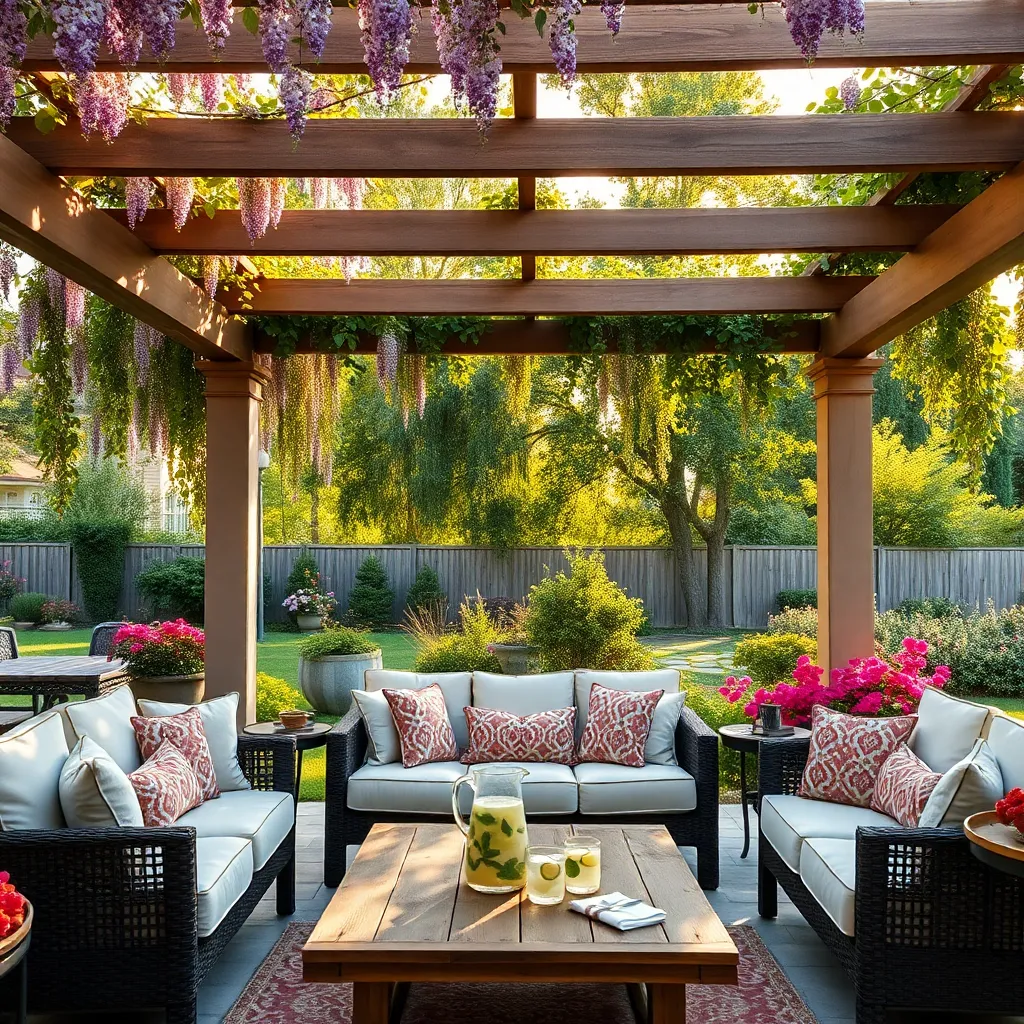
Pergolas offer stylish seasonal shade, enhancing any outdoor space while maintaining an open-air feel. For beginners, using durable materials like cedar or pressure-treated wood is recommended due to their natural resistance to weathering. Opt for a design that incorporates climbing plants or retractable canopies, allowing you to adjust the level of shade throughout the year. This adaptability transforms your pergola into a multi-season retreat, providing shelter from the harsh sun in summer and letting in more light during cooler months.
More advanced builders might explore using metal or composite materials for a modern twist, ensuring longevity and minimal maintenance. When designing a pergola, consider incorporating latticework or slatted roofs, which can be customized to control sunlight exposure. For a practical installation, aim for standard dimensions such as 10×10 feet or 12×12 feet, which provide ample space for outdoor furniture without overwhelming smaller yards. By focusing on both aesthetic and functional elements, your pergola can become a standout feature that enhances both the beauty and usability of your outdoor area.
Geodesic Domes: Strength and Stability
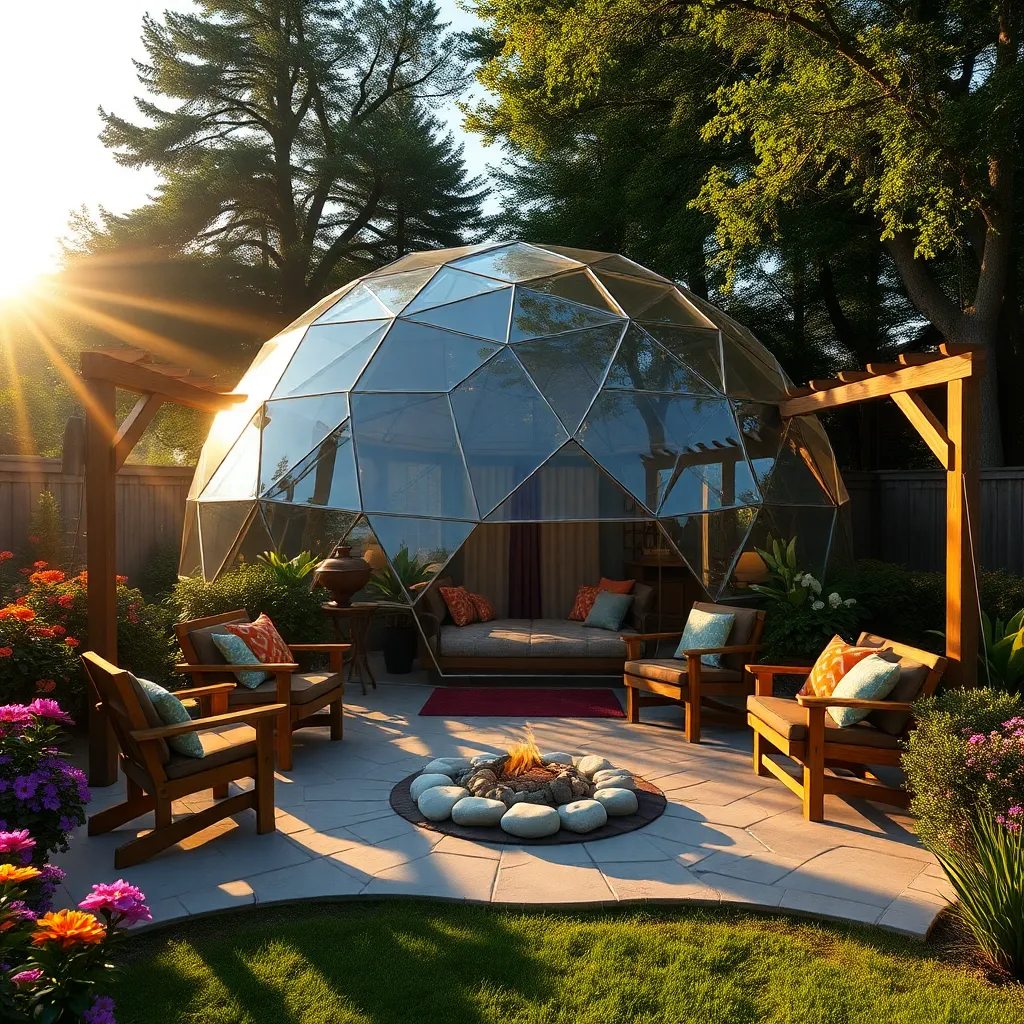
Geodesic domes offer an exceptional blend of strength and stability, making them an ideal choice for all-season outdoor shelters. Their triangular framework efficiently distributes stress, offering durability against harsh weather conditions. For beginners, starting with a simple kit can simplify the construction process, while more experienced builders can opt for custom designs using lightweight materials like aluminum or PVC. Consider integrating large windows or transparent panels to maximize natural light and create a welcoming atmosphere.
When constructing a geodesic dome, it’s crucial to focus on accurate measurements and precise connections. Using a reliable design software can help ensure that your dimensions are correct before cutting any materials. Advanced builders might explore incorporating insulation layers to enhance thermal efficiency, making the dome comfortable year-round. To personalize your space, add interior elements like planters or hanging lights, which can transform your dome into a multifunctional retreat. With the right approach, a geodesic dome can be both a practical shelter and a unique architectural feature in your outdoor space.
Screen Houses: Bug-Free Outdoor Enjoyment
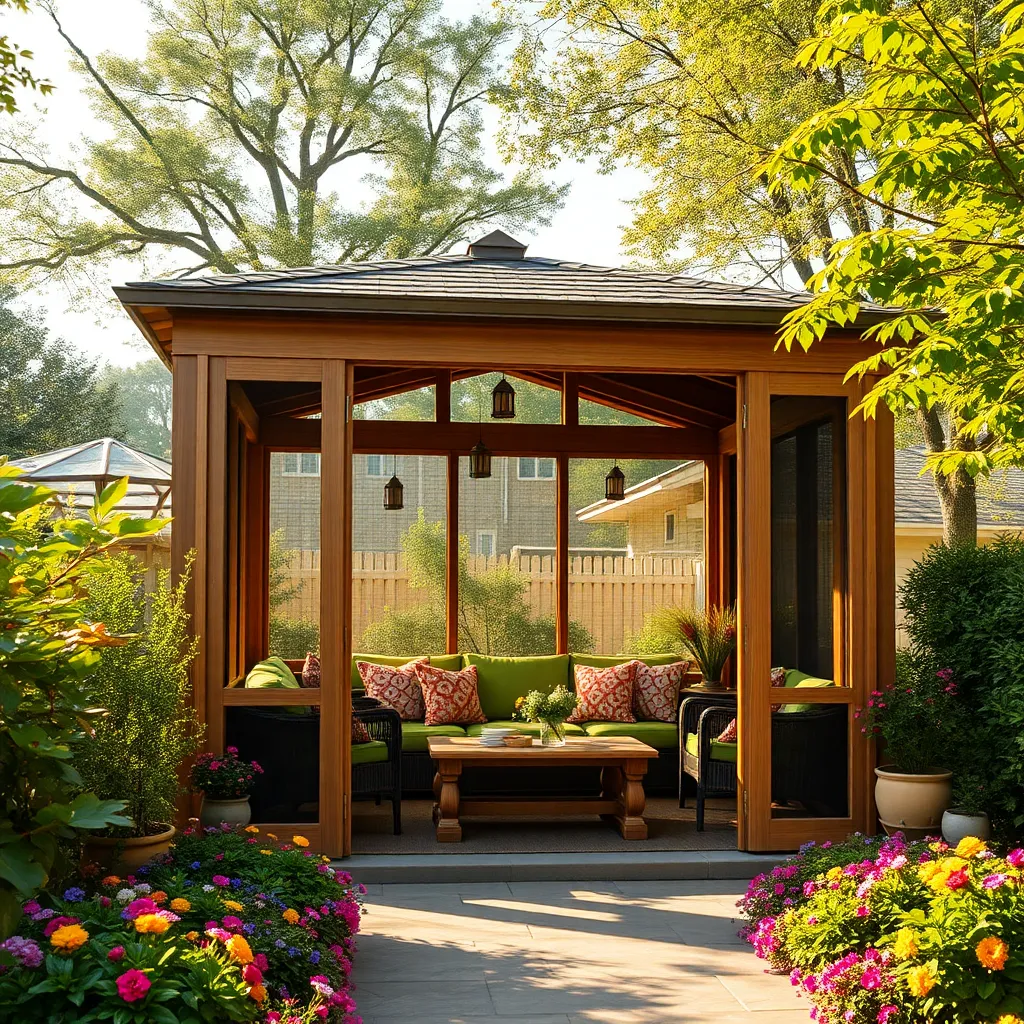
Screen houses offer a perfect blend of comfort and utility, allowing you to enjoy the outdoors without the nuisance of bugs. To construct a basic screen house, consider using lightweight aluminum or fiberglass mesh for the screens, as these materials are durable and provide excellent ventilation. Opt for a sturdy frame made from powder-coated steel or aluminum to withstand various weather conditions, ensuring longevity and minimal maintenance.
For a more advanced setup, consider adding a solid roof for enhanced weather protection, using materials like polycarbonate panels or treated canvas. Incorporate zippered screen doors for easy access and consider optional features like roll-up blinds or curtains for additional privacy and sun protection. When choosing dimensions, aim for at least a 10×12 feet space to comfortably accommodate seating and small tables, making your screen house a practical and inviting outdoor retreat.
Awnings: Adjustable Sun Protection
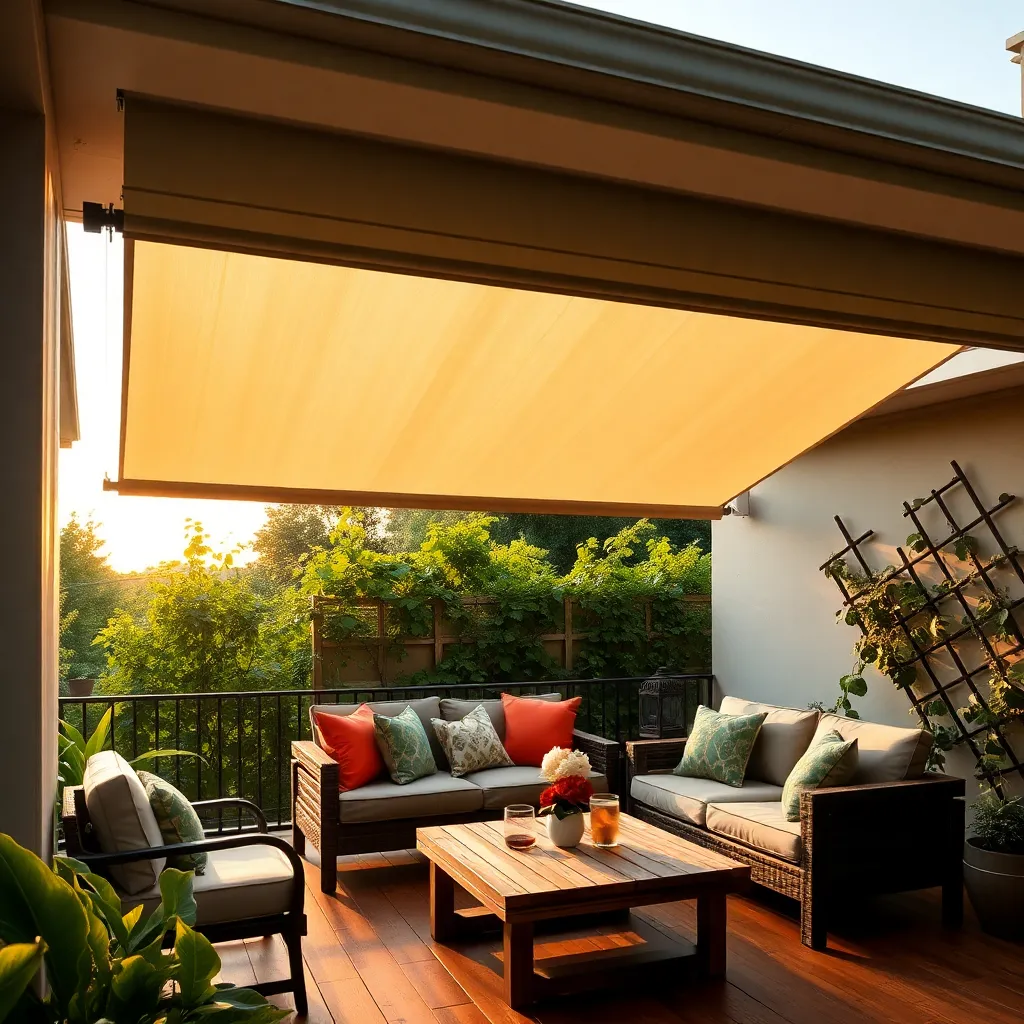
For those looking to balance sun exposure while enjoying their outdoor space, awnings offer adjustable sun protection and versatile design options. These structures can be attached to your home or freestanding, making them ideal for patios, decks, or even garden areas. Consider materials like durable acrylic fabric or polyester, which provide excellent UV protection while resisting water and mildew. A manual or motorized retractable awning allows you to easily adjust the coverage based on the time of day or weather conditions, providing both shade and an open-air feel as needed.
When selecting an awning, consider the dimensions and slope angle to ensure optimal sun coverage and rain runoff. Beginners might opt for a simple, pre-assembled kit, while seasoned DIY enthusiasts could explore custom installations for a tailored fit. Ensure the frame is constructed from weather-resistant materials like powder-coated aluminum or stainless steel for longevity. For an enhanced aesthetic, you can add integrated LED lighting or side curtains for privacy and additional weather protection. By choosing the right awning, you can create a comfortable, adaptable outdoor space that suits your needs year-round.
Cabana Shelters: Poolside Comfort
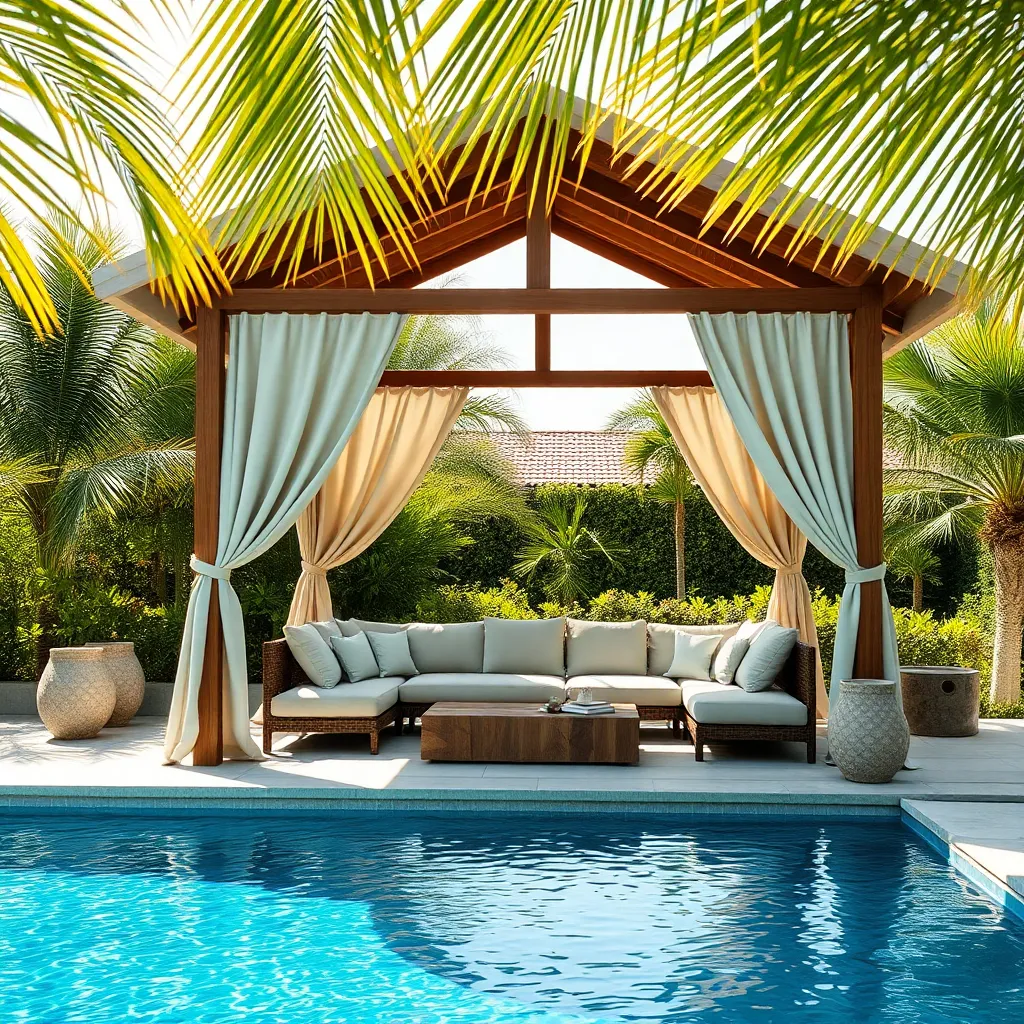
Cabana shelters offer a stylish and functional way to enhance your poolside experience, providing ample shade and comfort during hot summer days. For a basic setup, consider using materials like weather-resistant wood or aluminum frames, paired with durable outdoor fabric for the roof and sides. Ensure that the fabric is UV-resistant and water-repellant to withstand the elements and extend the cabana’s life. Beginners can start with a simple 8×8 foot structure, which can comfortably house a couple of lounge chairs, while advanced DIY enthusiasts might incorporate built-in seating or storage for towels and pool accessories.
Design elements such as curtains or roll-down shades can offer additional privacy and protection from the sun. To create a more luxurious feel, add features like hanging lanterns or outdoor string lights for evening ambiance. Consider using a modular design if you anticipate future expansions or relocations. For those ready to tackle a more advanced project, integrating a small bar or a mini-fridge into your cabana can create a poolside oasis that serves as an entertaining hub. Remember to anchor your structure securely, especially in areas prone to high winds, and regularly maintain the materials to ensure longevity.
Portable Hammock Stands: Relax Anywhere
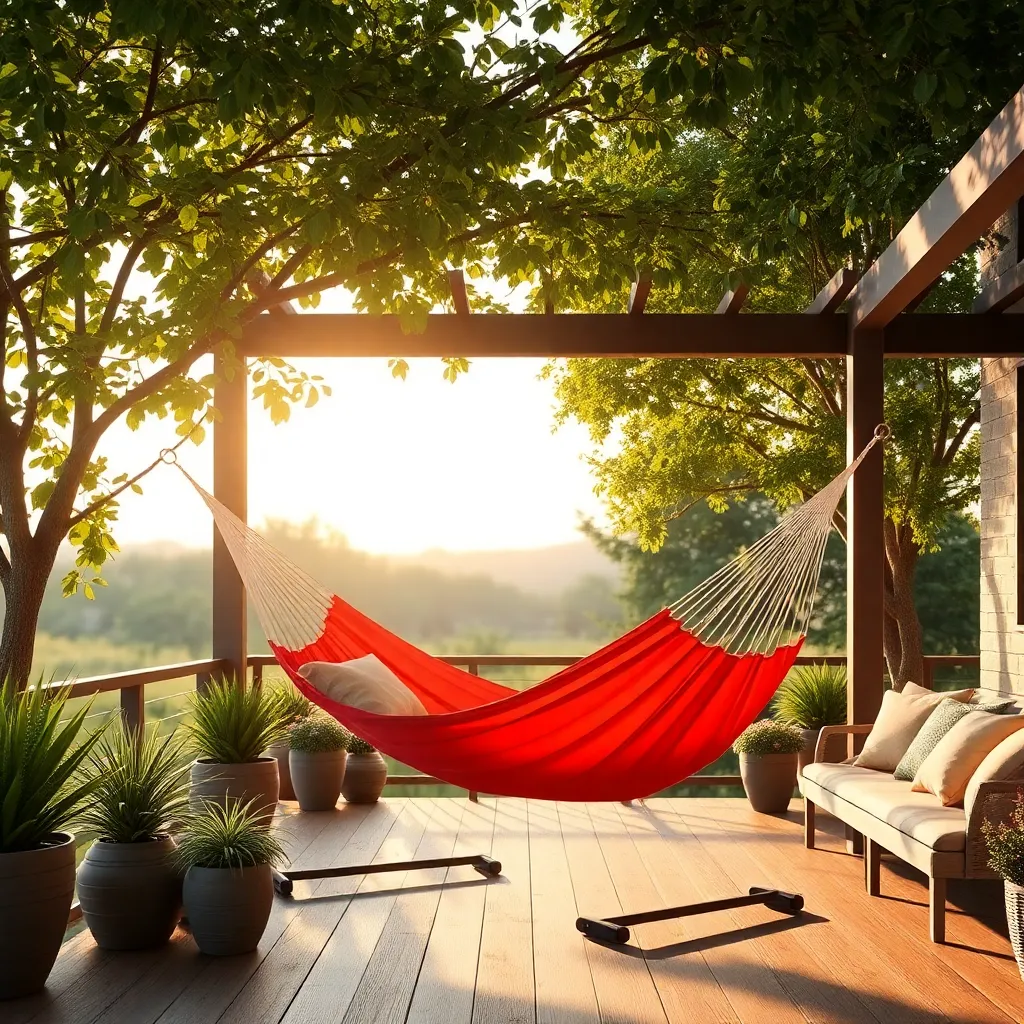
Imagine the freedom of setting up a hammock virtually anywhere in your garden or during a camping trip. Portable hammock stands make this possible with their easy-to-assemble designs and durable materials. Choose a stand made of powder-coated steel for enhanced weather resistance or opt for lightweight aluminum if portability is your priority. Look for stands that offer adjustable height and length to accommodate different hammock types and settings. For beginners, a simple A-frame or C-frame design is often the most straightforward to assemble.
Advanced users might appreciate stands with features like integrated side tables or cup holders for added convenience. Ensure the stand has a weight capacity that comfortably exceeds the combined weight of the user and the hammock—typically, a capacity of at least 400 lbs is recommended for safety. For added stability on uneven ground, consider using sandbags or screw-in ground anchors. With the right portable hammock stand, your outdoor relaxation zone can be as versatile as your adventures demand.
Four-Season Tents for Every Climate
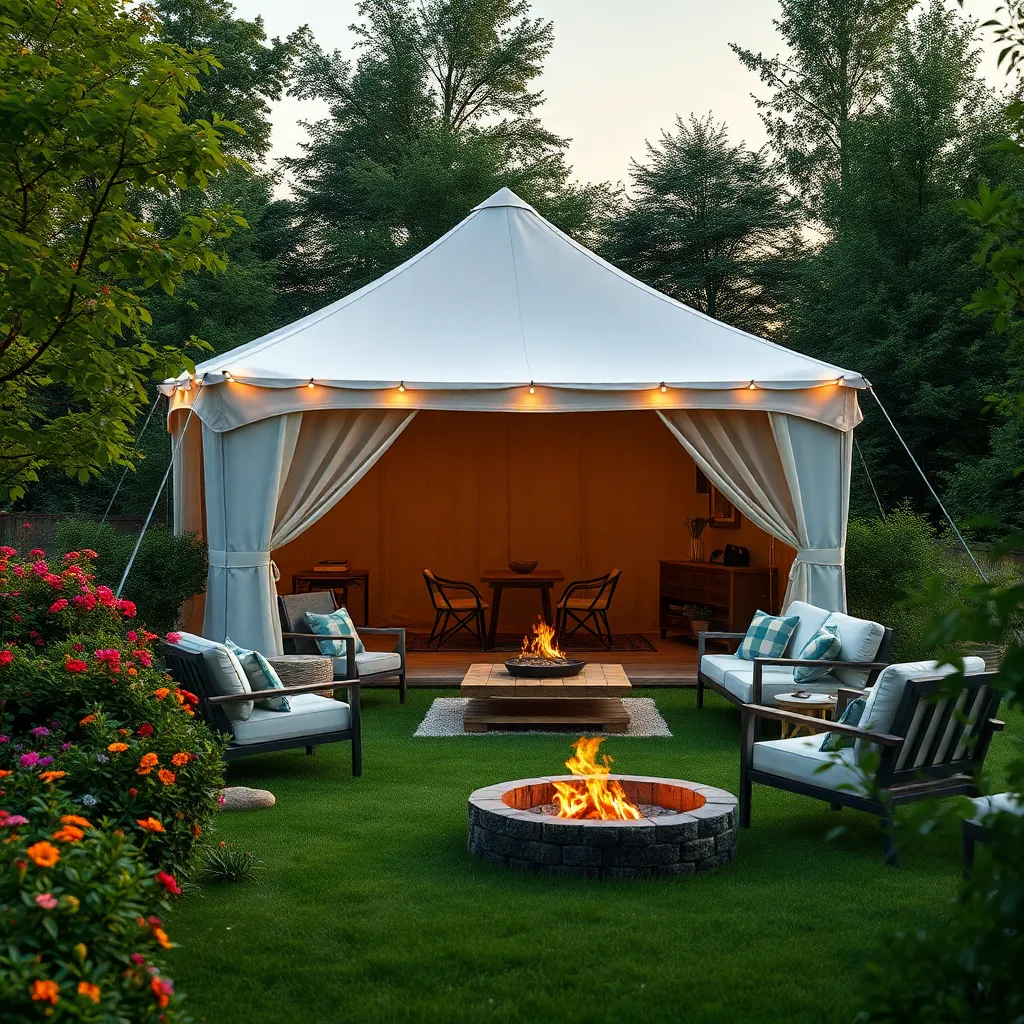
For those seeking a reliable shelter in any climate, four-season tents are an excellent choice. These tents are crafted with robust materials like ripstop nylon or polyester, ensuring durability against harsh weather conditions. Beginners should look for models with a high hydrostatic head rating, which indicates excellent water resistance. Seasoned campers might consider tents with adjustable ventilation panels and reinforced guy lines for added stability in windy environments.
When selecting a four-season tent, design elements such as a geodesic frame provide superior strength and wind resistance. For optimal comfort, choose a tent with a vestibule for gear storage and snow skirts to prevent snow buildup. Advanced users might appreciate features like dual-layer doors for insulation and condensation control. Recommended dimensions depend on usage, but a minimum of 30 square feet per person is ideal for comfort. Whether in snowy mountains or rainy forests, these tents offer a versatile solution for year-round adventurers.
Shade Sails: Modern and Flexible
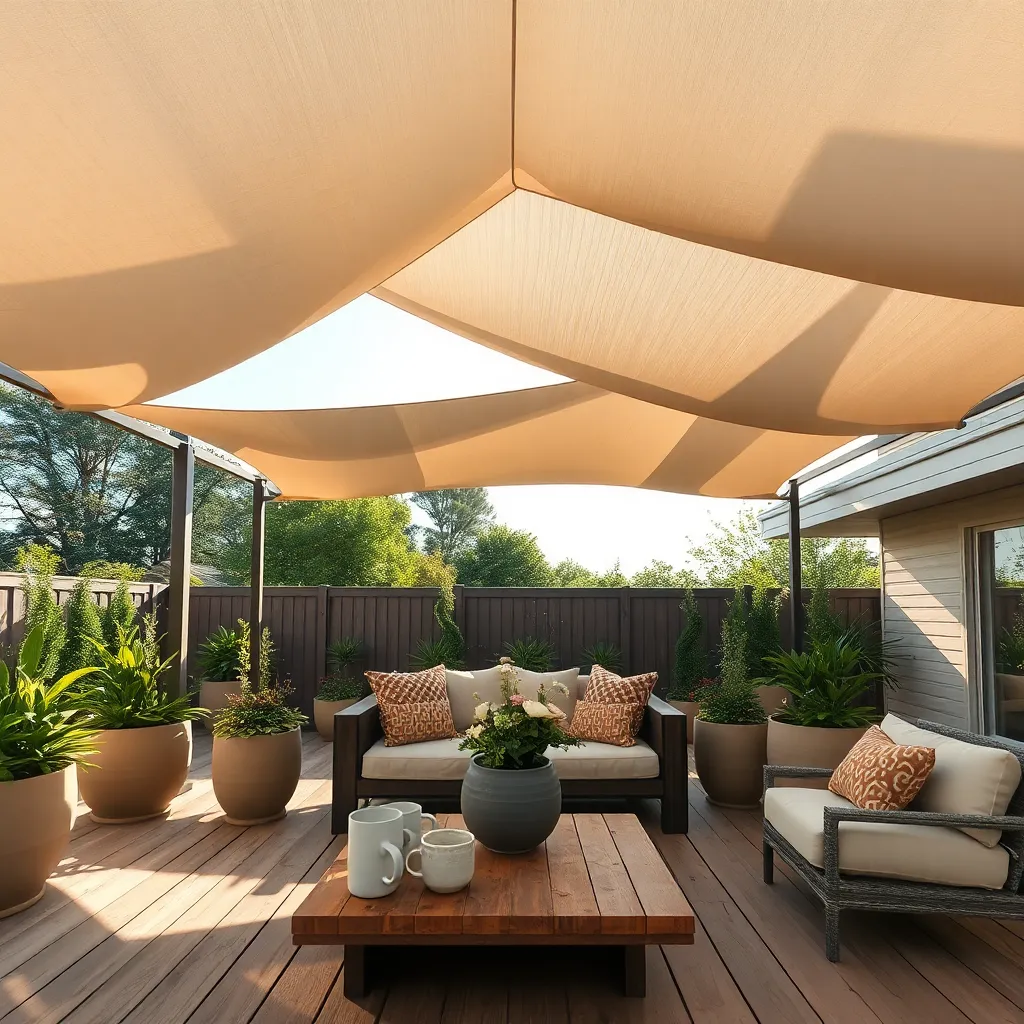
Shade sails offer a modern and flexible solution for creating comfortable outdoor spaces. They are made from durable, UV-resistant materials like high-density polyethylene, which provides excellent sun protection and can withstand various weather conditions. Design versatility is a key benefit, as shade sails can be arranged in various configurations to suit different areas, whether you’re covering a patio, pool, or garden nook. Installation is straightforward, requiring only a few anchor points such as poles or existing structures like walls or trees, making them accessible for both beginners and seasoned DIY enthusiasts.
For a sleek look, consider using triangular or rectangular sails and experimenting with layered designs to add visual interest and maximize shade. Choose lighter colors if you want to maintain a bright ambiance under the sails, or opt for darker hues to create a more intimate, cool retreat. Advanced gardeners might explore adjustable hardware for their shade sails, allowing for seasonal adjustments to the angle and tension, ensuring optimal coverage year-round.
- Remember to measure your space accurately
- Consider wind patterns to ensure stability
- Regularly check connections and fabric for wear
to maintain a safe and inviting outdoor environment.
Winter Shelters: Warmth in Cold Seasons
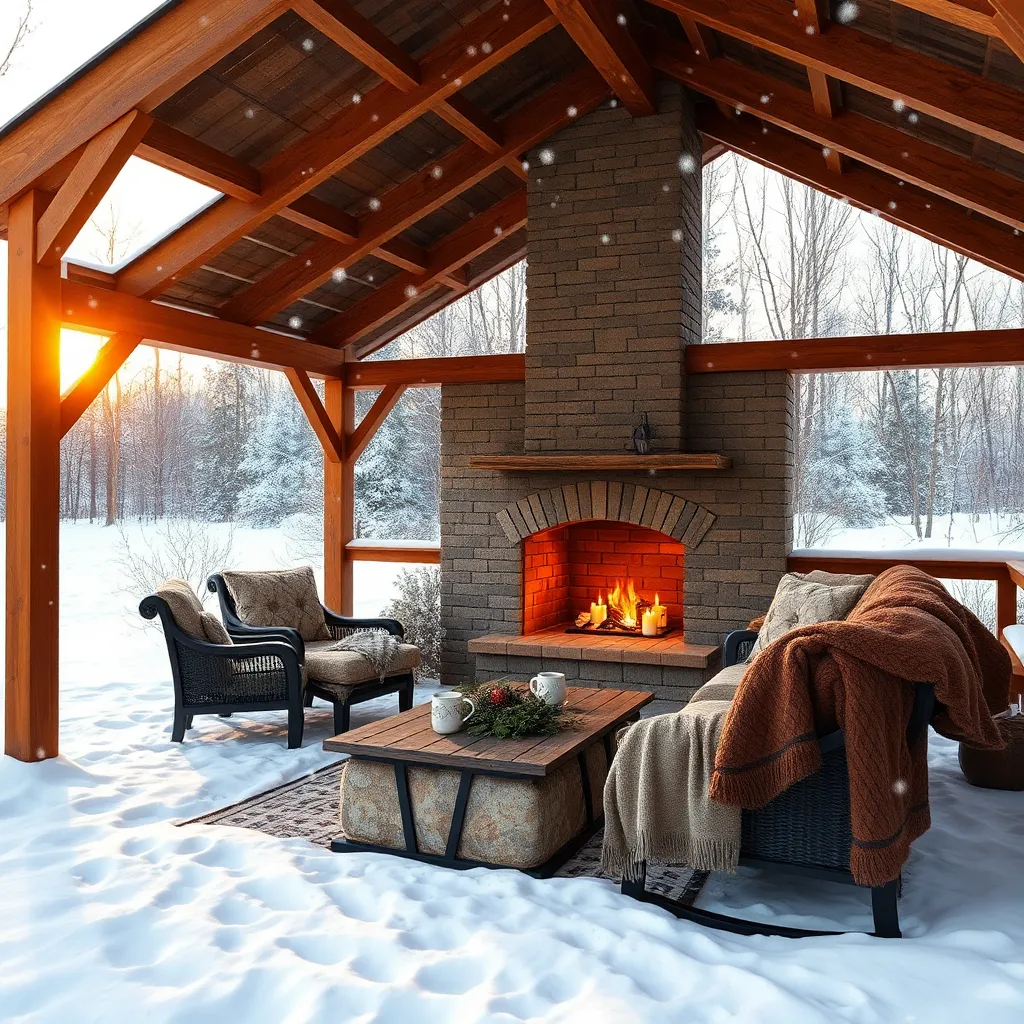
Creating a winter shelter in your garden can extend your outdoor enjoyment even when temperatures drop. Consider using sturdy materials like treated wood or metal for the framework to withstand harsh weather. Incorporate clear polycarbonate panels for walls, which provide both insulation and visibility, allowing sunlight to warm the space naturally. For beginners, a simple lean-to design attached to an existing structure is a practical start. Ensure the shelter is positioned to maximize sunlight exposure, typically on the southern side of your property.
Advanced gardeners can enhance their shelters with additional features like integrated heating options such as space heaters or a small wood-burning stove. Adding thermal curtains can provide extra insulation and retain heat during the night. Consider installing adjustable vents to manage airflow and prevent condensation buildup inside the shelter. For a cozy touch, integrate seating areas with weather-resistant cushions and throw blankets. These enhancements not only improve comfort but also make your winter outdoor space a welcoming retreat.
Conclusion: Creating Beautiful Outdoor Spaces
In exploring the ’14 Versatile Outdoor Shelters for All Seasons,’ we’ve discovered how adaptability, communication, trust, balance, patience, resilience, support, understanding, flexibility, shared goals, compromise, emotional intelligence, empathy, and appreciation serve as the pillars that fortify any relationship. Each concept is akin to a shelter, providing protection and comfort through all seasons of life.
Now, it’s time to take action. Choose one concept to focus on this week—whether it’s enhancing communication or practicing empathy—and observe the positive shifts it brings to your relationship. Remember, small, consistent efforts lead to lasting change.
Don’t let this valuable insight slip away. Bookmark this article for future reference, ensuring you have a reliable guide at your fingertips to revisit whenever your relationship needs a boost.
As you nurture these essential elements, envision a future where your relationship thrives, weathering any storm and basking in the warmth of mutual understanding and love. Your journey towards relationship success is just beginning, and with these tools in hand, you’re well-equipped to forge a path filled with joy, connection, and enduring happiness.

